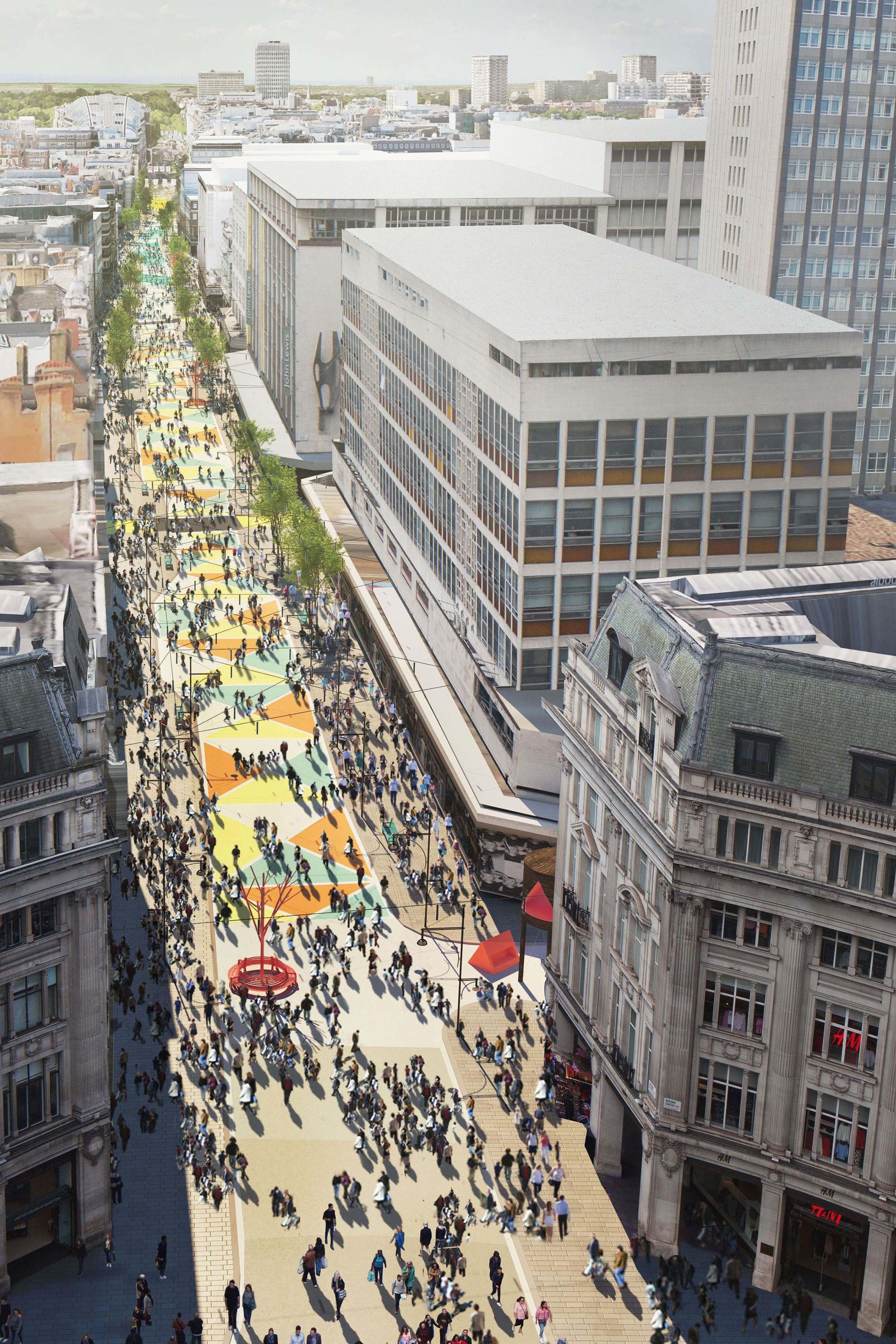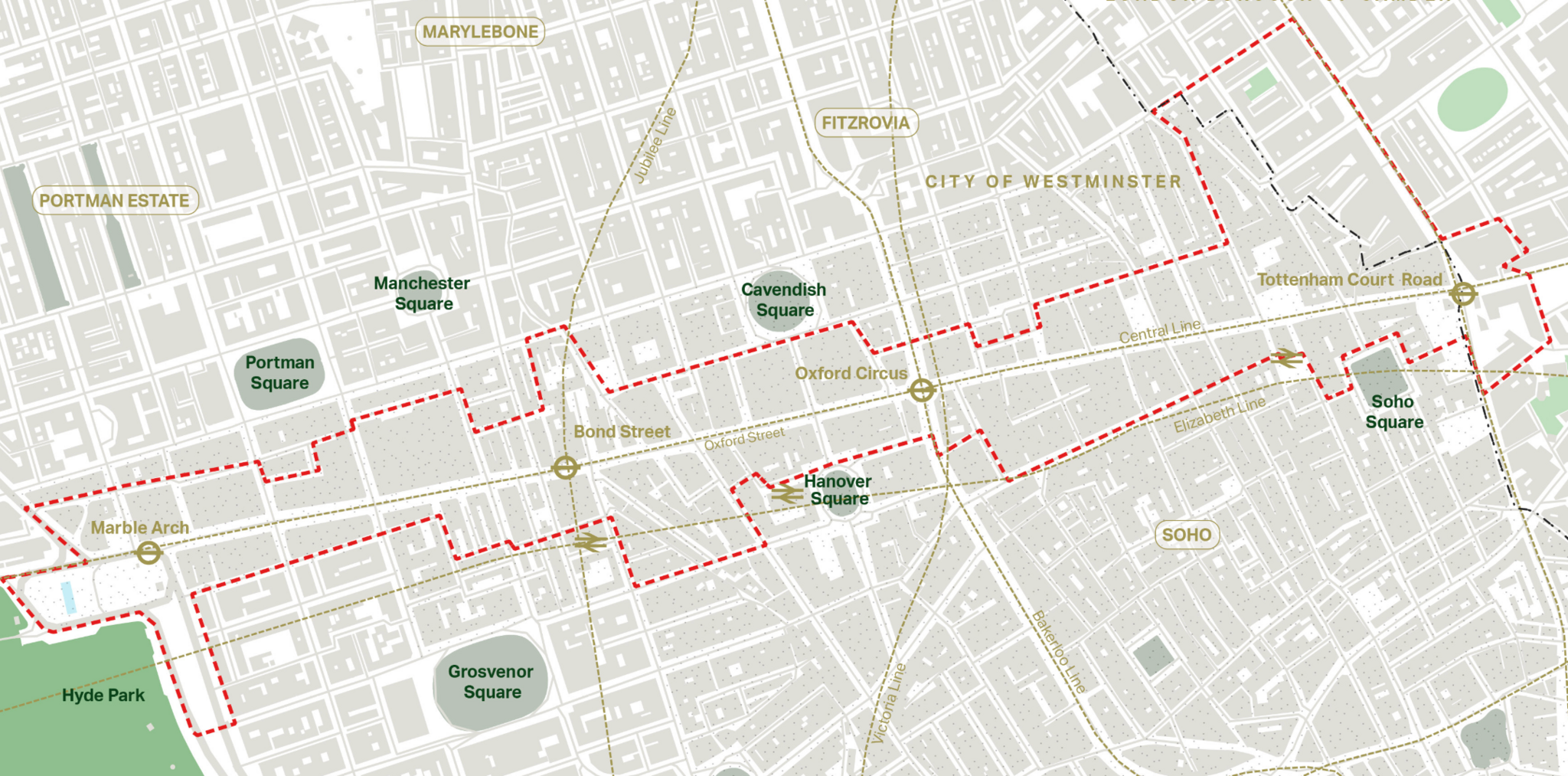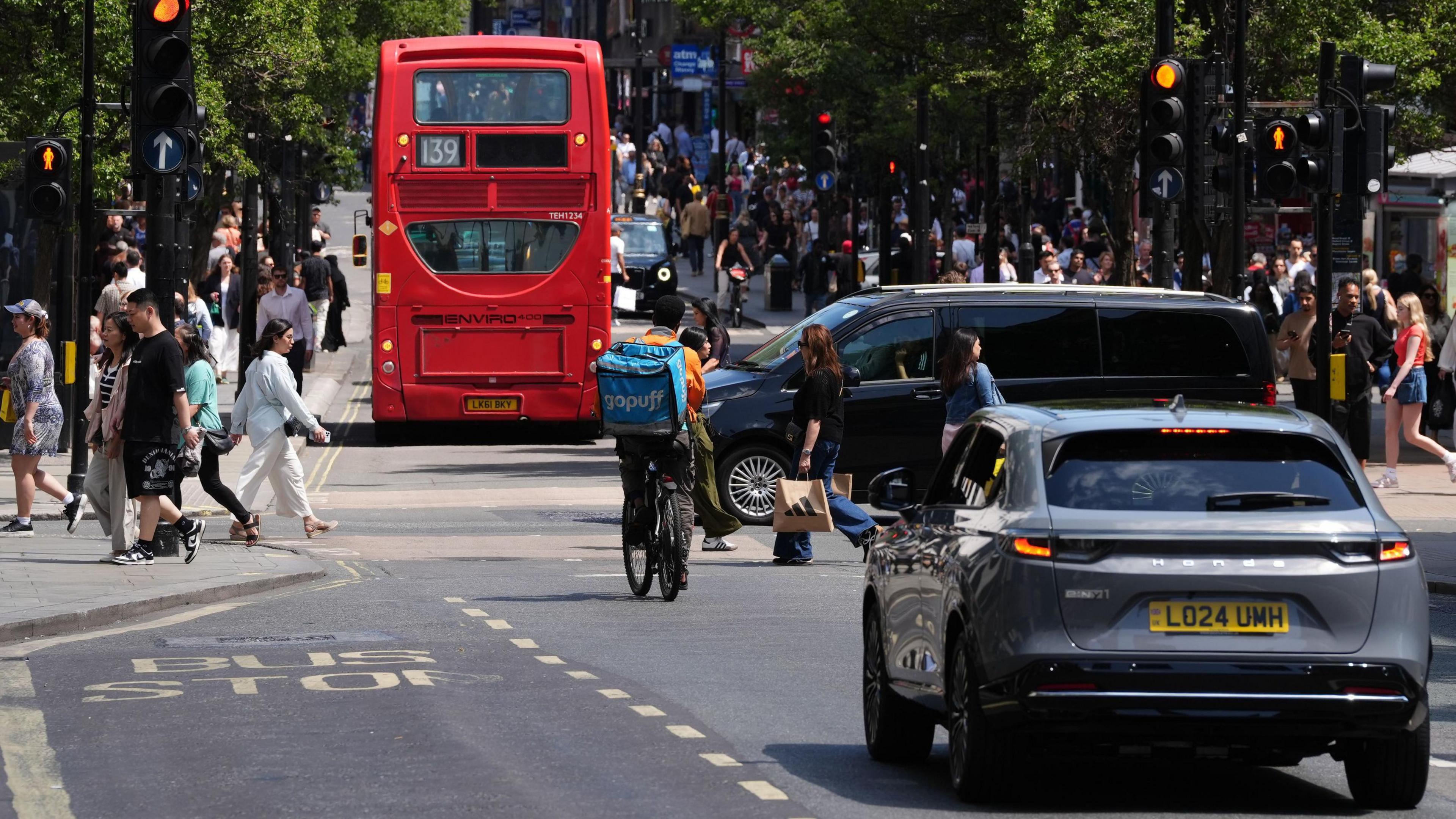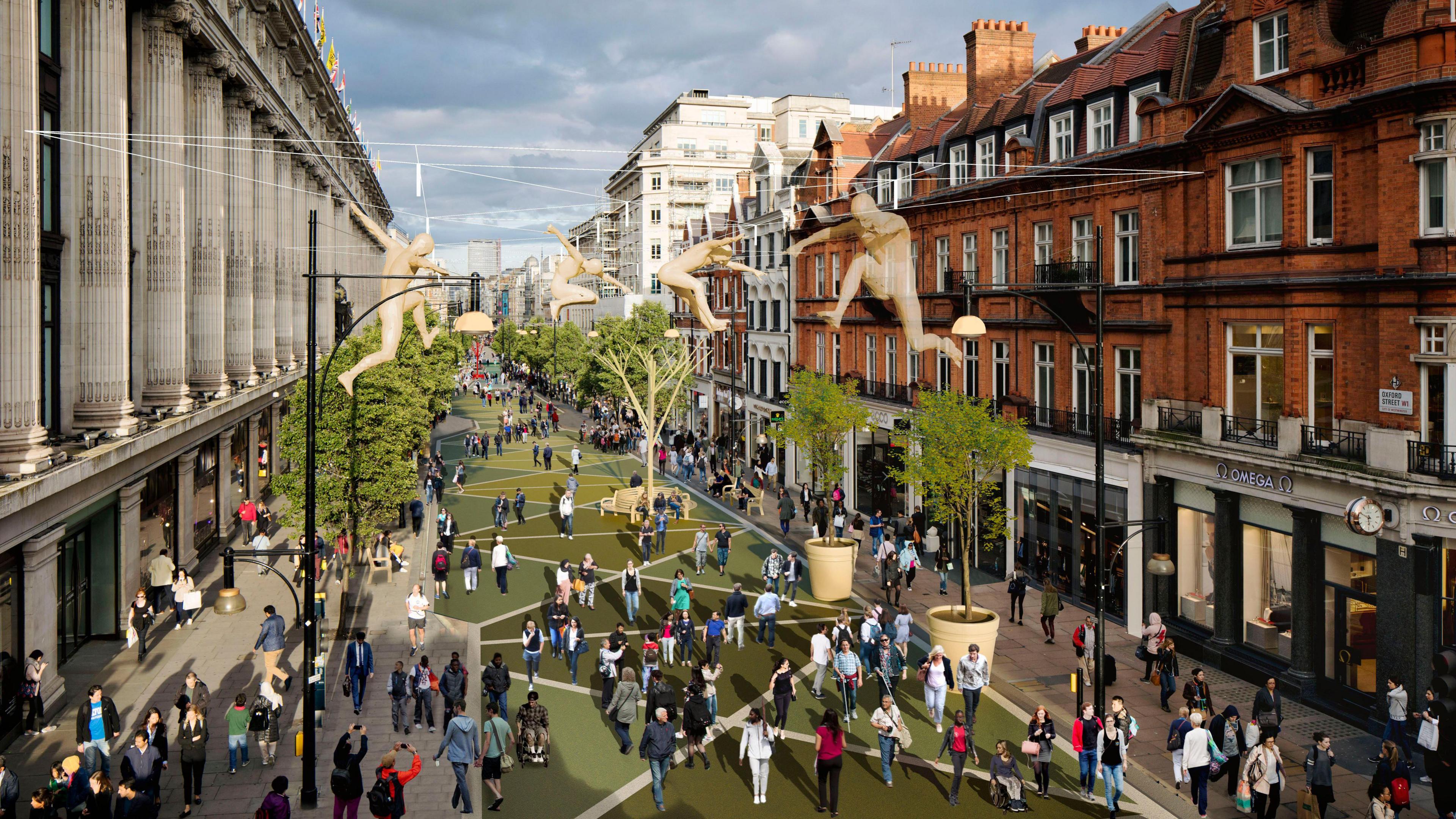Oxford Street traffic diversion plan unveiled

Oxford Street is an area of "critical national economic importance", with an estimated annual contribution of £25bn to London's economy
- Published
Proposed new traffic routes and public transport changes to accommodate the pedestrianisation of Oxford Street have been released as part of a consultation by the mayor of London and Transport for London (TfL).
The consultation is separate a from a previous one, external that ended in June, which showed 63% of Londoners were in favour of the regeneration, and which prompted the plans to get the go-ahead.
Some local residents have told the BBC they do not want the changes, citing concerns over displacement of traffic and buses, as well as disability access.
Mayor of London Sir Sadiq Khan said: "We need urgent action to give the nation's high street a new lease of life."

An artist's impression of a pedestrianised Oxford Street
"I'm pleased that we're now moving ahead with our exciting plans to regenerate this iconic area, backed by the vast majority of Londoners and businesses," he added.
The mayor explained that the new proposals, released on Friday, external, "map out the potential next steps" of the plan.
Sir Sadiq said he "encourages everyone to have their say on the proposals".
The proposals for the section of Oxford Street between Orchard Street and Great Portland Street:
Closure to private motorised vehicles, buses, taxis and private-hire vehicles, cycles, scooters and pedicabs
Service and delivery vehicles allowed to access the traffic-free area from midnight to 07:00
General traffic to continue using alternative routes (general traffic is already banned between 07:00 and 19:00 Monday to Saturday)
Instillation of new and wider pedestrian crossings
Buses that currently serve Oxford Street to be rerouted along Wigmore Street and Henrietta Place, with new bus stops and shelters to be installed. Increased journey times calculated to be "less than a minute"
Provision of other new bus stops, taxi ranks and drop-off locations as close to the pedestrianised area as possible
Possibility of increased blue-badge parking bays in the area
Creation of new cycle routes, as cycling would not be permitted in the new stretch

An artist's impression of Oxford Street with no traffic
The pedestrianisation plans pivot around Sir Sadiq establishing a new mayoral development corporation (MDC), which would give a mayoral body control of the area in terms of planning and development.
So far the plan has been given government and London Assembly backing, and now the mayor is working with the government to make the necessary legislation for the MDC to be established by 1 January.

The new mayoral development corporation will cover one block either side of Oxford Street
Claire Mann, chief operating officer at TfL, said: "We look forward to hearing the public feedback on these proposals and, subject to the consultation results, delivery of the scheme could begin in the second half of 2026."
Listen to the best of BBC Radio London on Sounds and follow BBC London on Facebook, external, X, external and Instagram, external. Send your story ideas to hello.bbclondon@bbc.co.uk, external
- Published19 September

- Published31 August

- Published17 June
